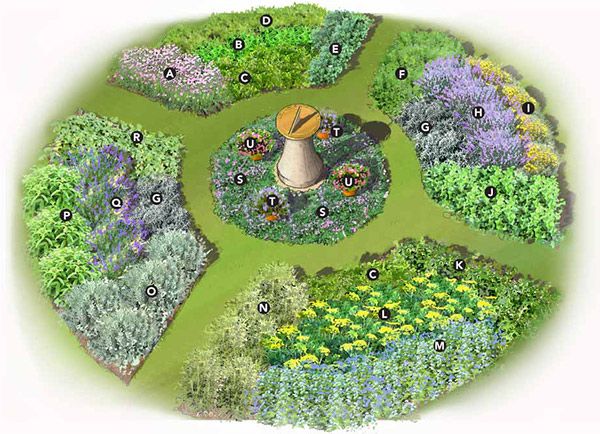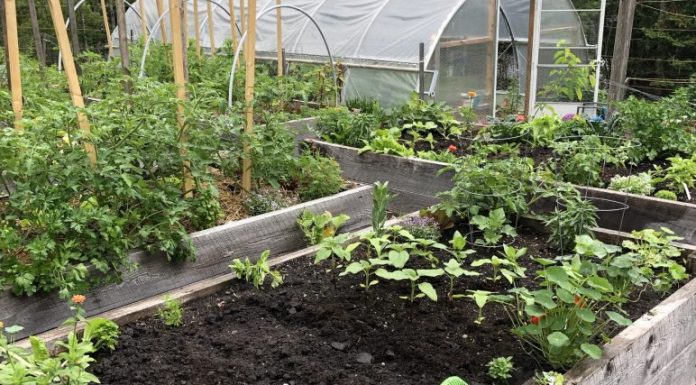Embracing the power of nature, a medicinal herb garden offers a sustainable way to boost health and wellness. This guide will walk you through the process of planning and cultivating a garden that caters to your family’s health needs throughout the year.

1. Identifying Your Needs
Begin by considering the health needs of your family. Common ailments like colds, flu, sore throats, and headaches can be addressed with specific herbs. Research the herbs that address your family’s specific health concerns, such as yarrow for bleeding and wound care, or herbs that help with high blood pressure.
2. Aesthetic and Practical Considerations
A well-planned herb garden adds beauty to your yard. Aim for a variety of colors and continuous blooms from spring through fall. Consider herbs like sage, bergamot, borage, and echinacea, which not only serve medicinal purposes but also enhance the garden’s aesthetic appeal.
3. Understanding Plant Growth
Underestimate the growth of your plants, and your garden may become overcrowded. Plan your garden layout with future growth in mind, avoiding chaos and ensuring each plant has enough space to thrive.
4. Cold Stratification and Seed Organization
Some medicinal herbs require cold stratification for better germination. Organise your seeds well and consider saving seeds year after year for a sustainable garden.
5. Companion Planting and Pest Control
Consider companion planting for pollinator attraction and pest control. Be mindful of local wildlife that may be attracted to your garden and plan accordingly with fences or deer-repelling plants.
6. Starting Your Garden
While starting from seeds is the most cost-effective method, purchasing plant starts or herbal crowns from a nursery can give you a head start. Be mindful of where you source your plants or seeds, avoiding contamination from invasive species like Asian jumping worms.
7. Choosing the Right Herbs

Select herbs based on their utility and adaptability to your climate and garden conditions. For example, plantain and violet for coughs, herbs for stress relief like lemon balm and chamomile, or immune-boosting herbs like elderberry and echinacea.
8. Safety and Cautions
Always research the cautions and contraindications of the herbs you plan to use. Many herbs can interact with prescription medications or may not be suitable for certain health conditions. Pregnant women should be especially cautious and consult with their physician before using any medicinal herbs.
9. Recommended Medicinal Herbs and Their Uses
Incorporating a variety of medicinal herbs tailored to your needs is key. Here’s a list of some beneficial herbs and their uses:
- Calendula: Known for its vibrant flowers, it’s excellent for skin care and wound healing.
- Chamomile: A calming herb, ideal for teas and aiding in digestion and sleep.
- Echinacea: Boosts immunity and can be used to make tinctures for colds and flu.
- Lavender: Great for relaxation, sleep, and digestion, and can be added to teas and baked goods.
- Mint: Ideal for digestive issues and respiratory conditions; best grown in pots.
- Sage: Useful for sore throats, hot flashes, and as a seasoning.
- Yarrow (white): Effective for bruising, stopping bleeding, and pain relief.
- Elderberry: Known for its immune-boosting properties.
- Feverfew: Helps with headaches, fevers, and respiratory issues.
- Tulsi (Holy Basil): Used in teas for its stress-relieving properties.
- Borage: Aids in coughs, congestion, and has expectorant properties.
- California Poppy: Often used in teas and tinctures for its soothing effects.
- Lemon Balm: Known for its relaxing qualities, best tinctured when fresh.
- American Skullcap: An excellent nervine, often used alongside California poppy and lemon balm.

Each herb offers unique benefits, so choose those that best align with your family’s health needs.
Planning a medicinal herb garden is a rewarding endeavor that combines the joys of gardening with the benefits of natural remedies. By understanding your family’s health needs, choosing the right plants, and planning your garden layout carefully, you can create a beautiful and functional space that serves as a natural apothecary right in your backyard.










